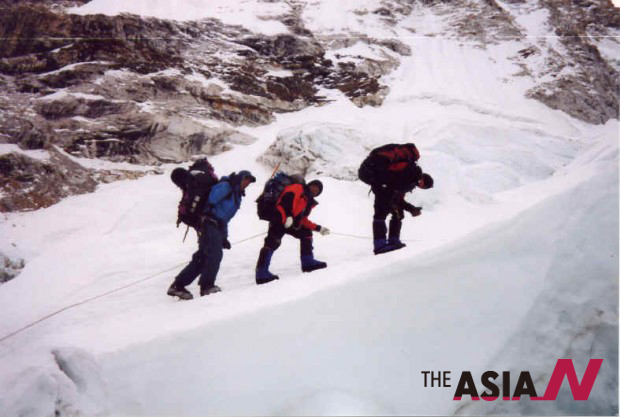Conquering Mt. Everest’s impossible without Sherpas ②
*This is the second of two-part story about the role of Sherpas they have played for the successful climbing of the Mt. Everest.
According to Ang Chhiring Sherpa, of the total 3700 individuals who climbed the peak, some 1900 are Sherpas. Eight of them were women Sherpa.
This year too these people of the high Himalayan region continued their traditional adventurous feat on Mt. Everest. Of the 205 Nepali nationals out of total 350 summiteers this year, 190 were Sherpas.
Neema Chhemji Sherpa of Kathmandu became the second youngest girl to scale the peak this year. Similarly, 13 Sherpas of the same village made it to the peak of the highest mountain on single day on May 26. Likewise, Kami Sherpa scaled it three times within eight days this year. However, Angkaji said that Kami’s records could be invalid as he might not have made all the three ascents from the base-camp. “One can easily set such records if he begins climbing only from the 4th camp which is just 150 meters below the peak,” he said.
Prakash Dahal, son of UCPN-Maoist chairman Pushpa Kamal Dahal, also climbed the highest peak on 26 May this year. He had Kaji Sherpa to guide him to the peak.
The Sherpas live in the high Himalayas of Nepal from east to west. They follow Tibetan Buddhism and take the mountains as female deity. These honest and brave people of high mountains mark several festivals and love to spend extravagantly. That is why many of the Sherpas are still poor. “They do not hesitate to blow the money in drinks and merrymakings,” said Ang Chhiring. Polyandry was a popular practice in the Sherpa communities until a few decades ago but with the increasing educated lots, it ceased to exist.
Until a few decades ago, most of the Sherpas used to work as porters for the mountaineers. But over the years, they have become professional climbers and tourism entrepreneurs, thanks to the booming mountaineering which has brought fortune to these poor people of Himalayas. Today a significant number of Sherpas live in Kathmandu operating trekking and tourist guide businesses.
Ang Chhiring estimates the total population of the Sherpas at 380,000 and one third of them are now living in India and USA. According to him, some 50,000 Sherpas are now living in the USA. “The Sherpa population in New York alone is about 16, 000,” he said.
Most of those who took career in travel trade reached the USA as well as Australia.
As said above, a mountaineering expedition without Sherpa is impossible. So, almost all expeditions to any mountain in Nepal require help of the local Sherpas. All the 14 mountains measuring over 8,000 metres in Nepal were first conquered by Shepas or the foreigners with the help of the Sherpas. And many of Sherpas lost their lives in the mountains. This year, Karsang Namgyal, the eldest son of the Snow Leopard died in Mt Everest.
The first successful expedition of October 1954 to Choyu, of 1955 to Makalu and the Manaslu expedition of 1956 had Sherpas as guides and porters.
“The foreigners could not climb without receiving help from Sherpas,” said Ang Chhiring.
But in the past, the Sherpas could climb the mountain only if the expedition team leader allowed them to do so.
“In many cases, the mountaineers prevented the Sherpas from reaching the peak fearing that they might be blamed that they reached the peak with Sherpas’ help. But now the provision is amended and any Sherpa can climb the peak if they wish,” Ang Chhiring said.
These days, ‘sherpa’ has also become a terminology to refer anyone who helps the mountaineers in the high Himalayas. It is not essential to be of the people of the Sherpa clans to become such ‘sherpa’.
*Interested readers can find more details about Sherpa climbers in Nepalese Climbers on Mount Everest, a book penned by Ang Phurba Sherpa and Ramesh Raj Kunwar.










































































